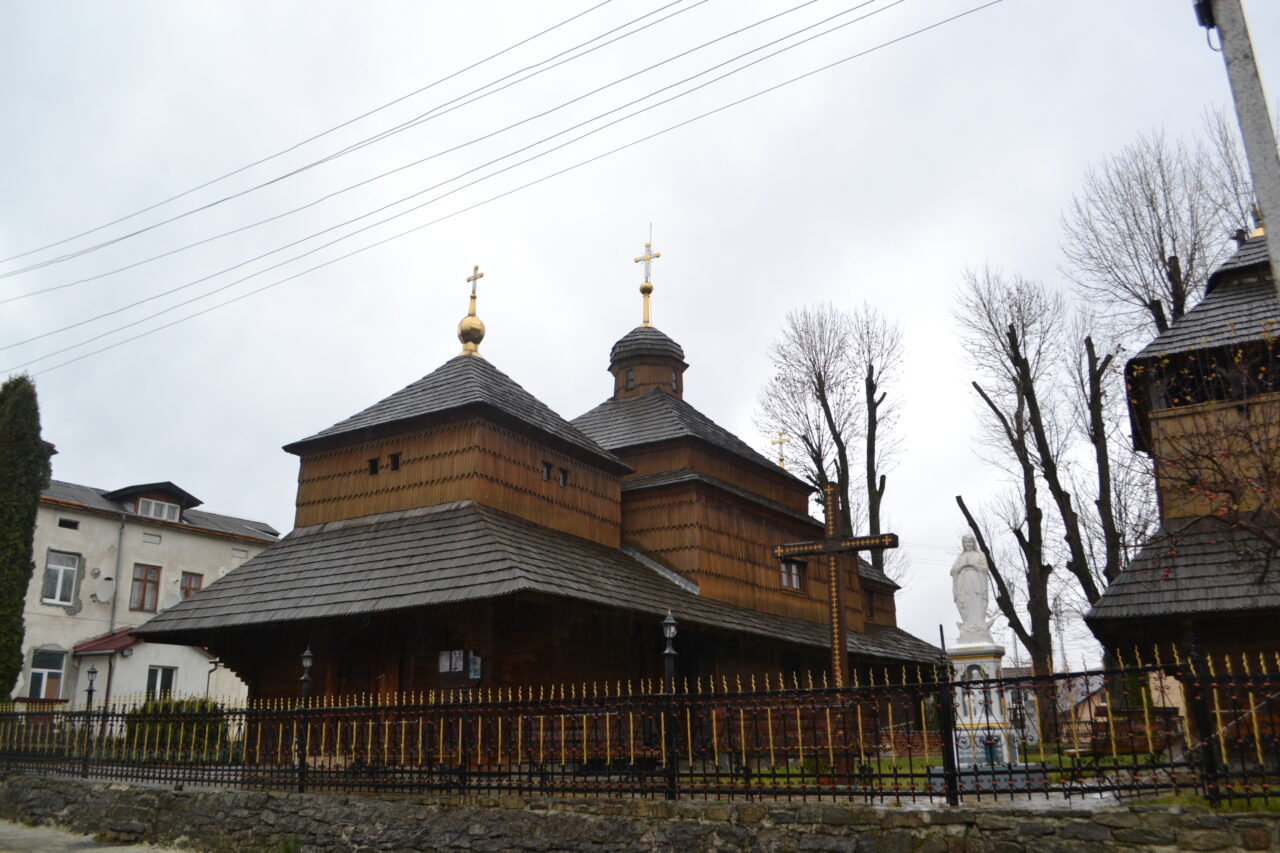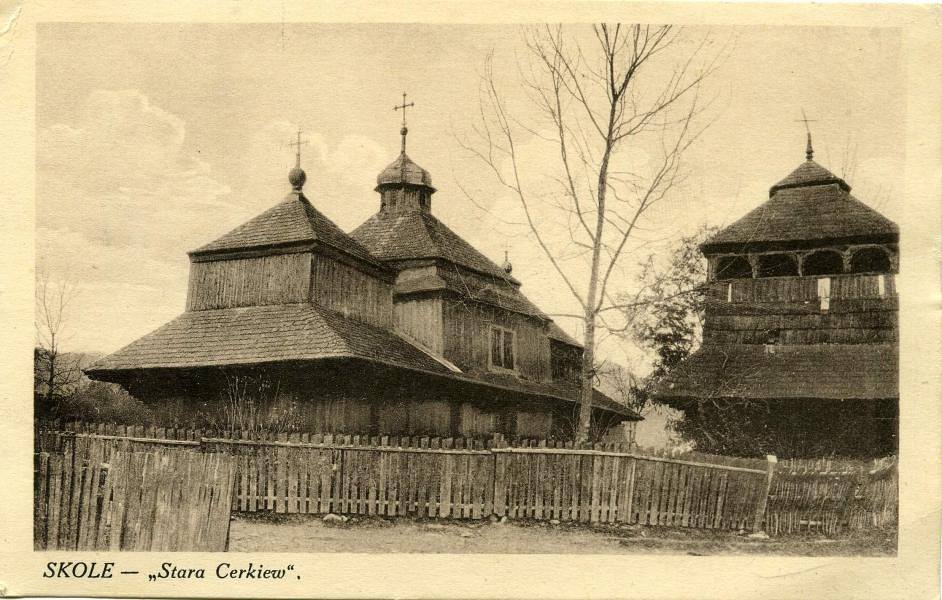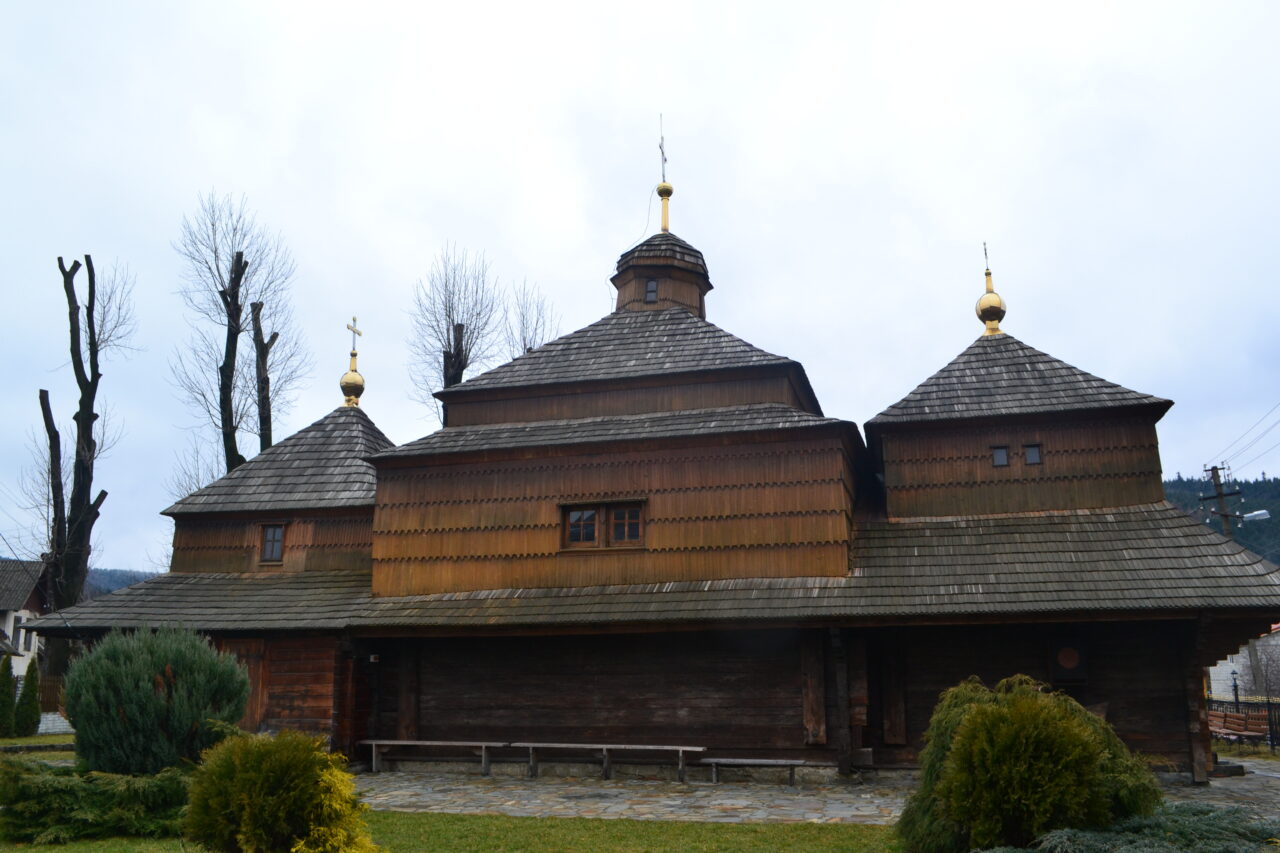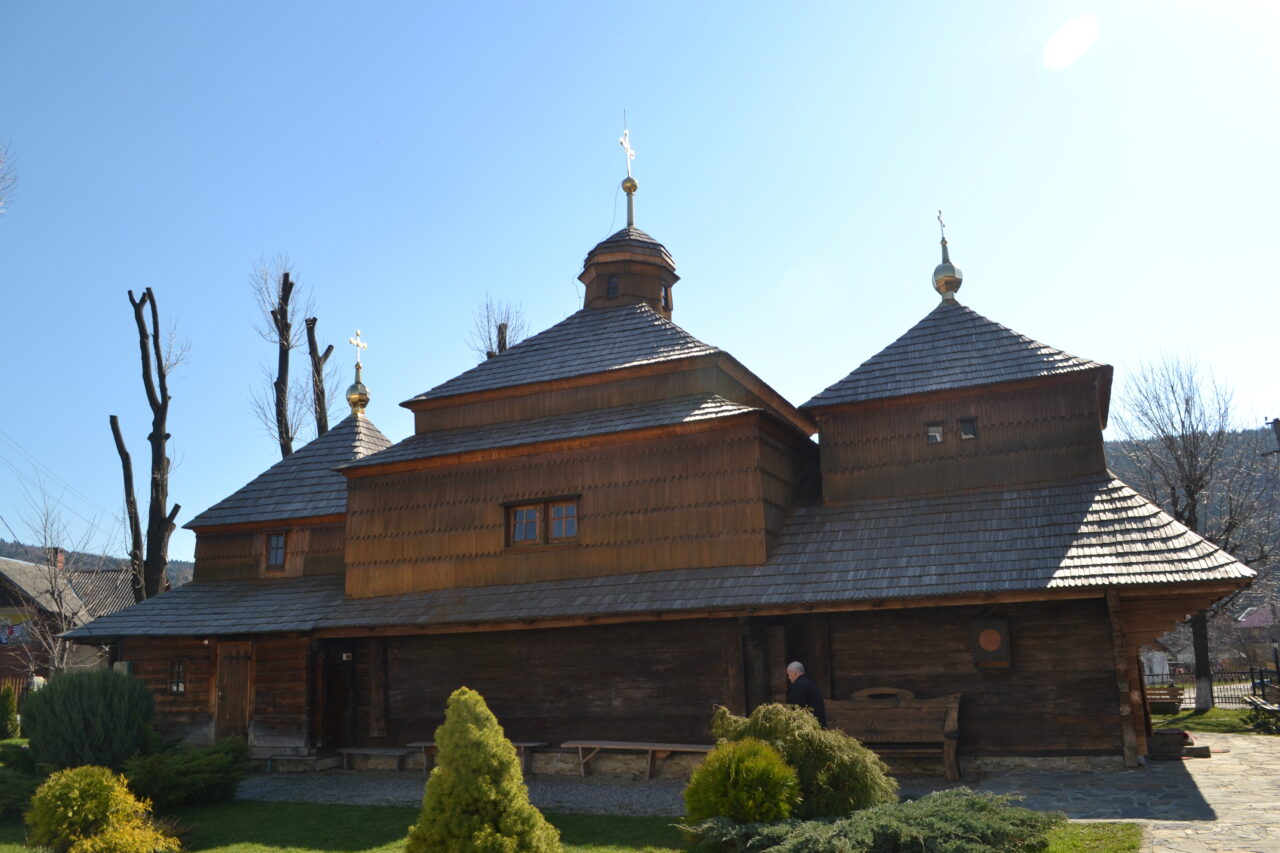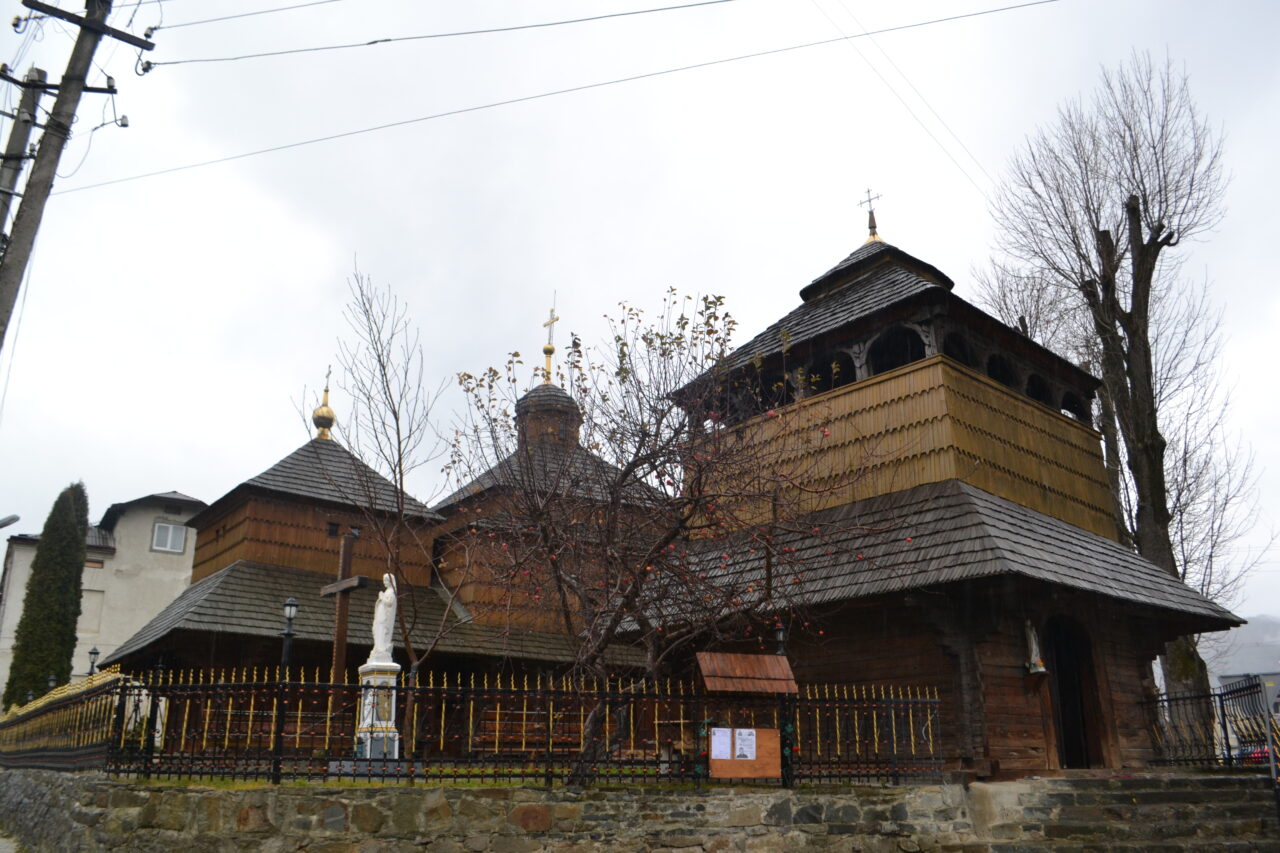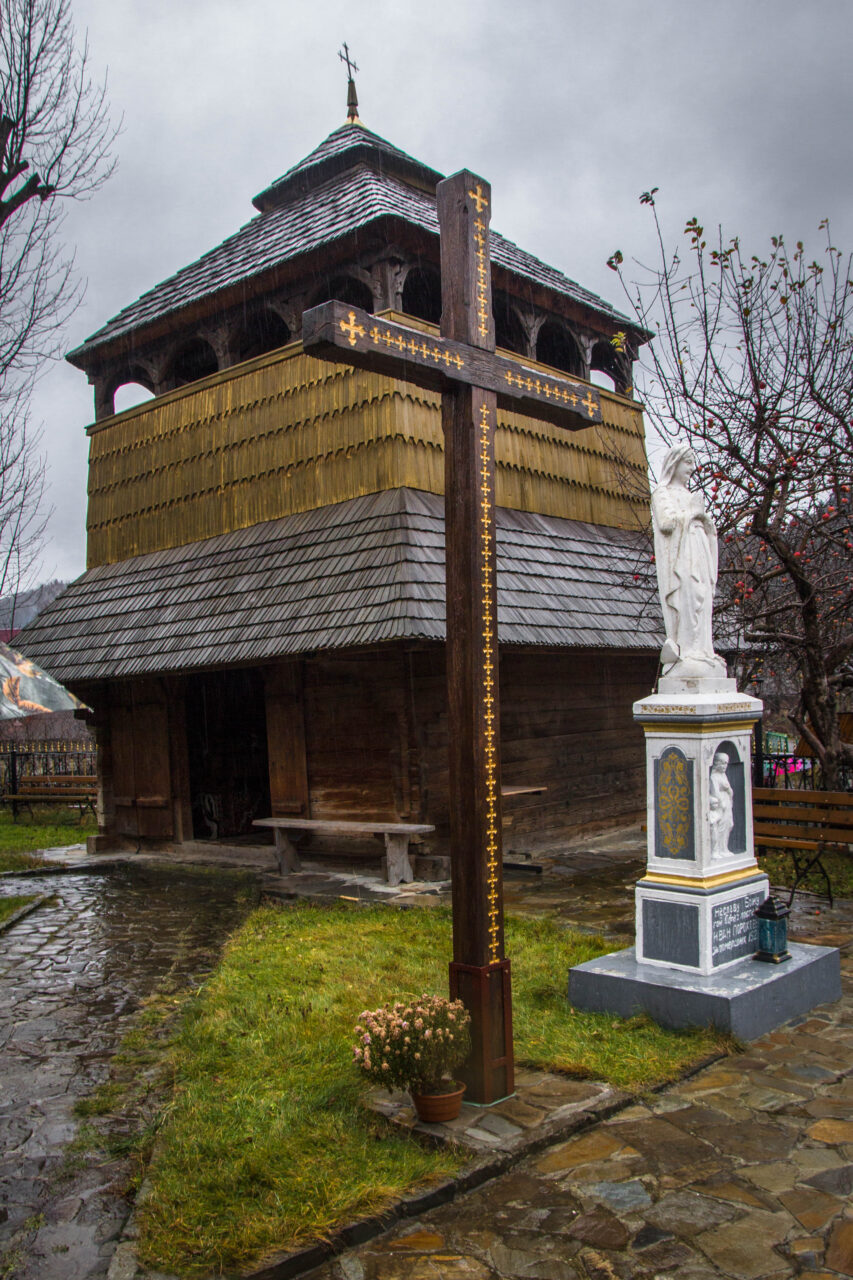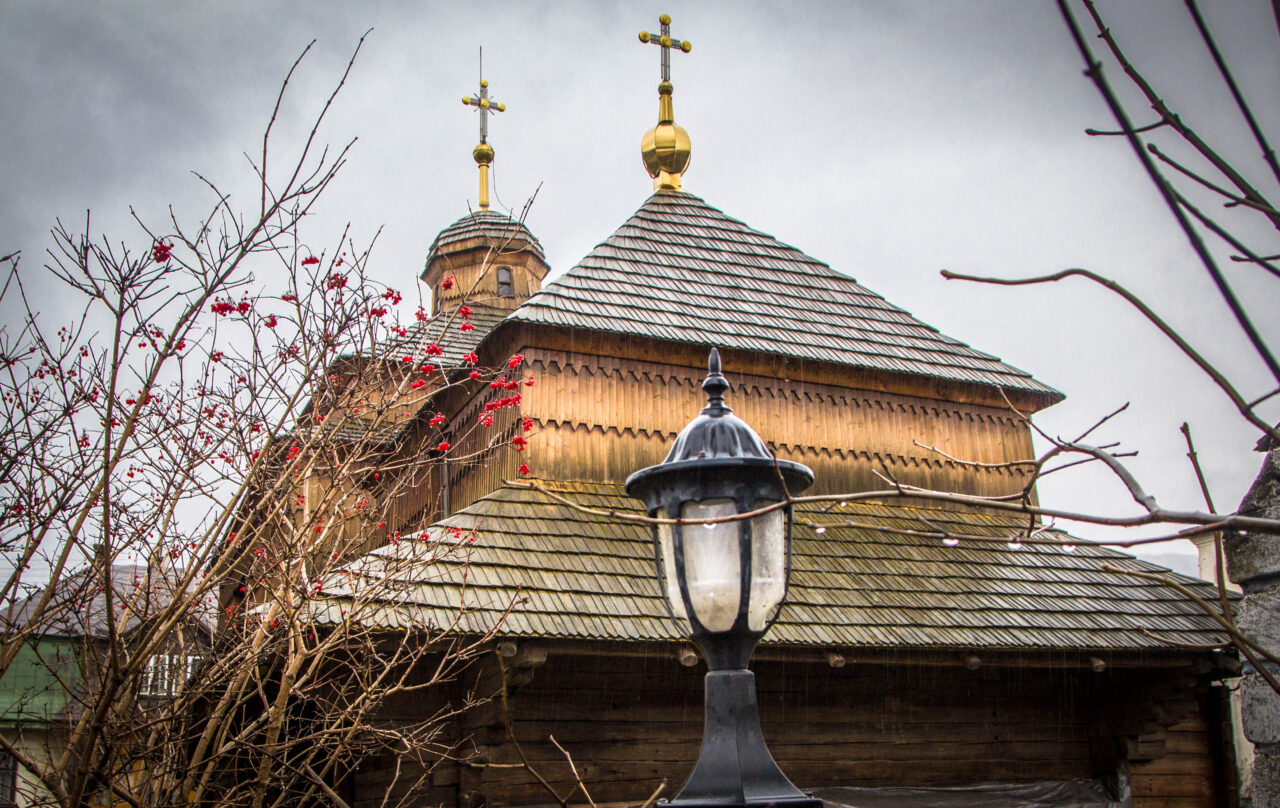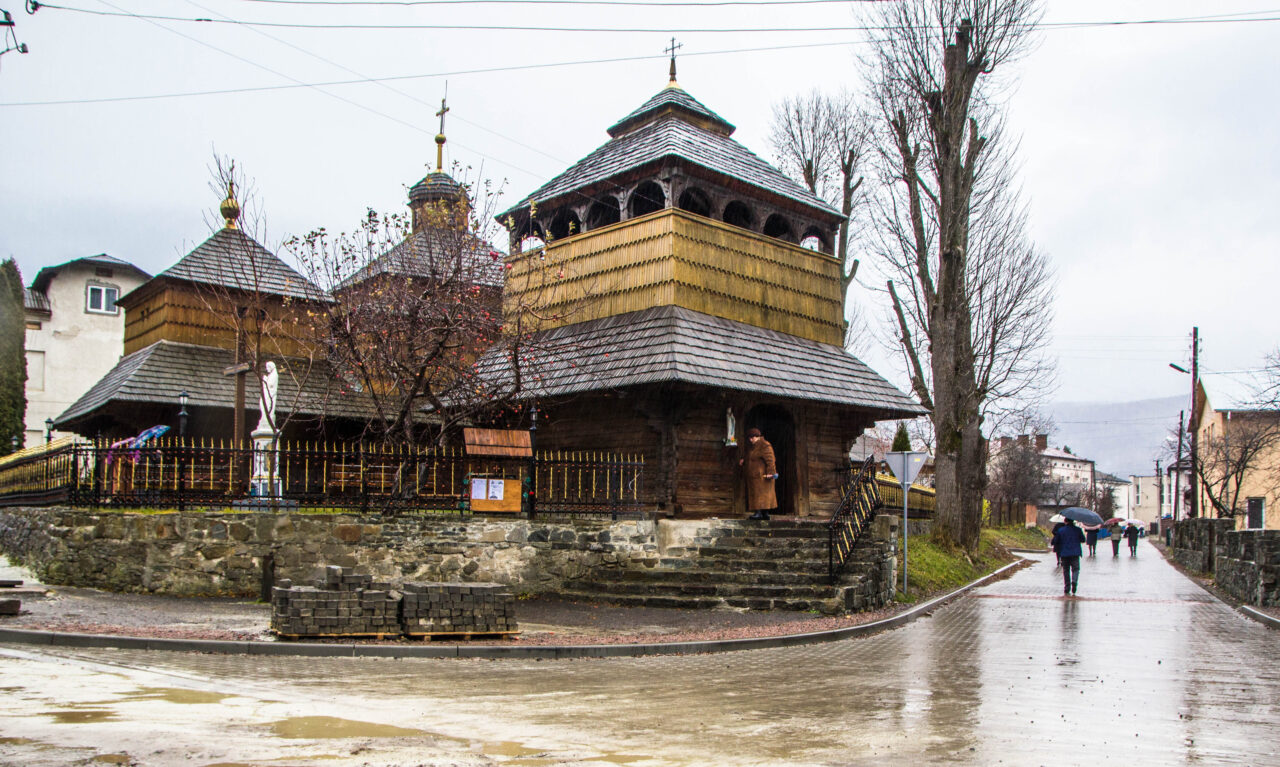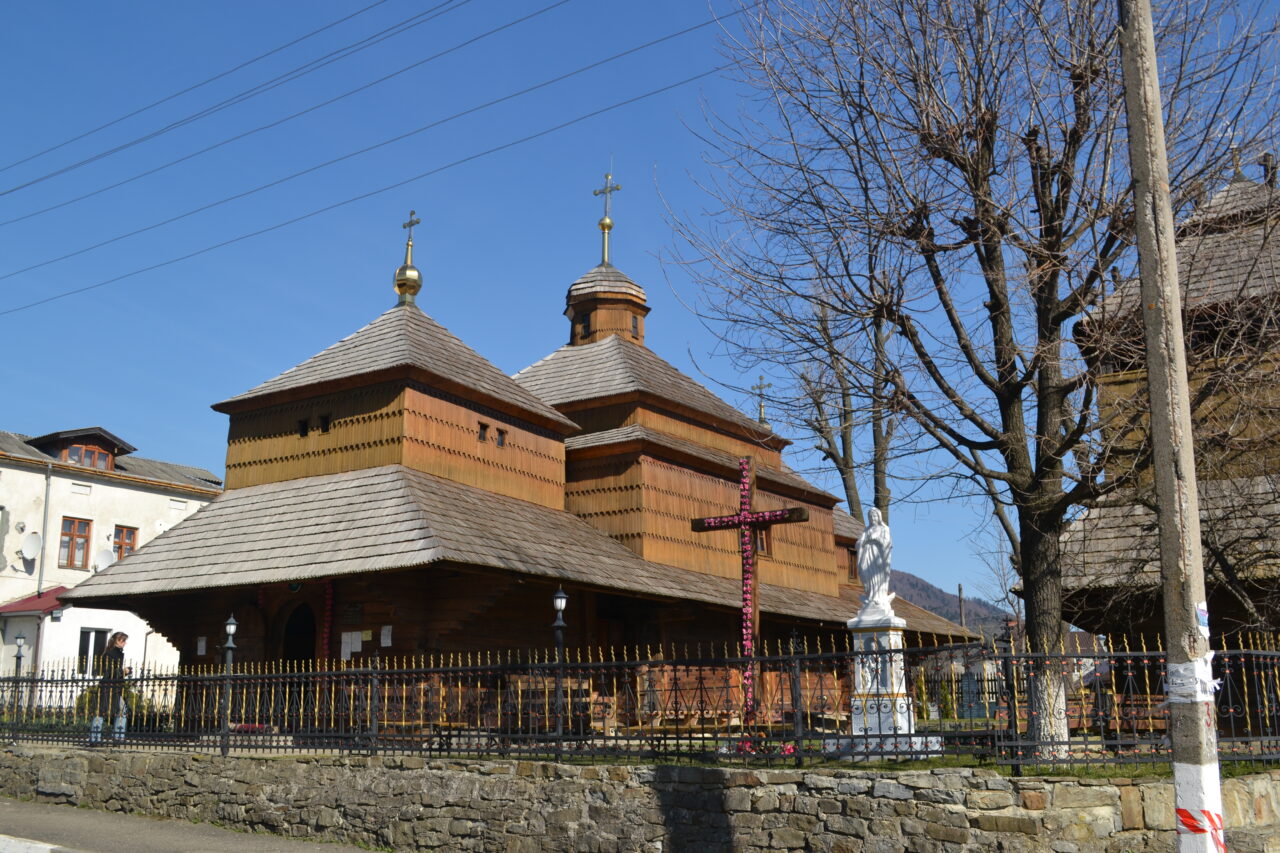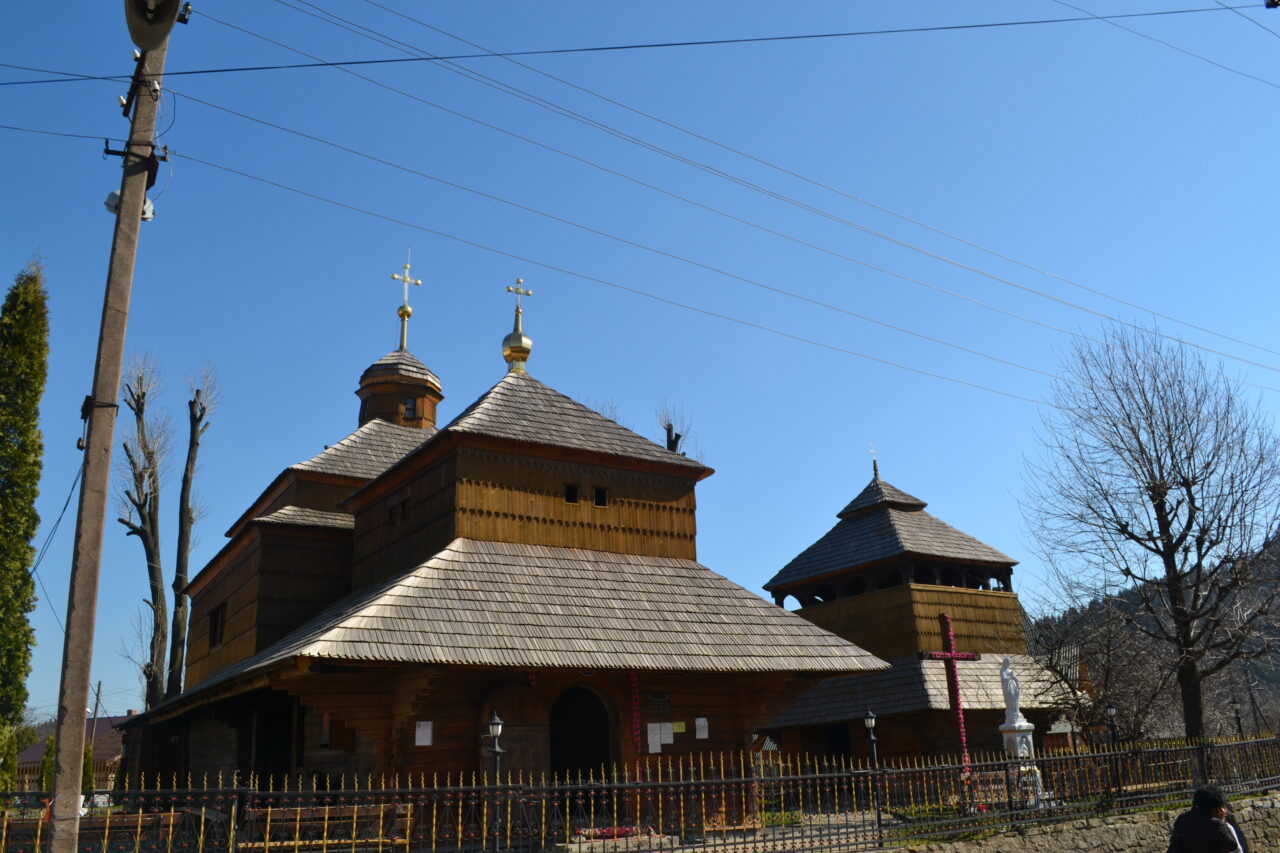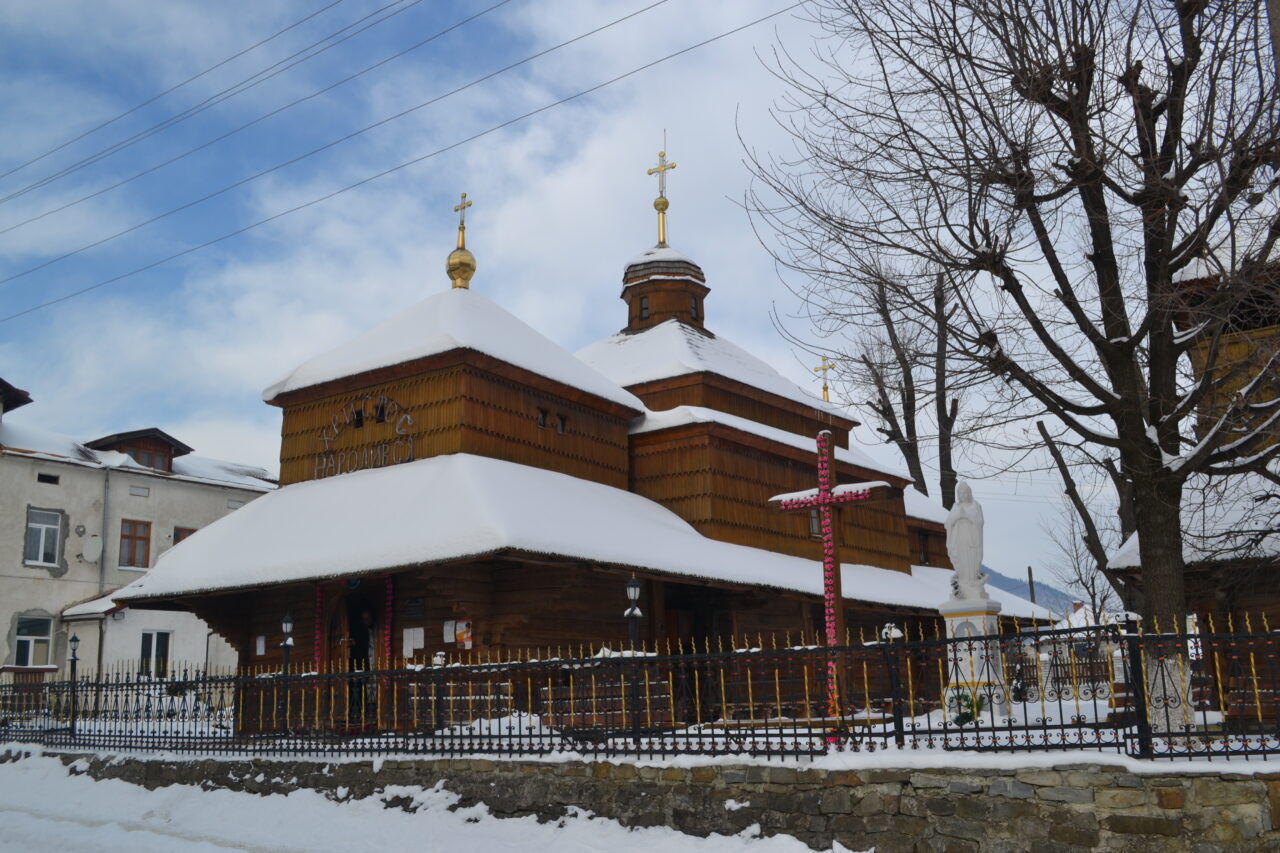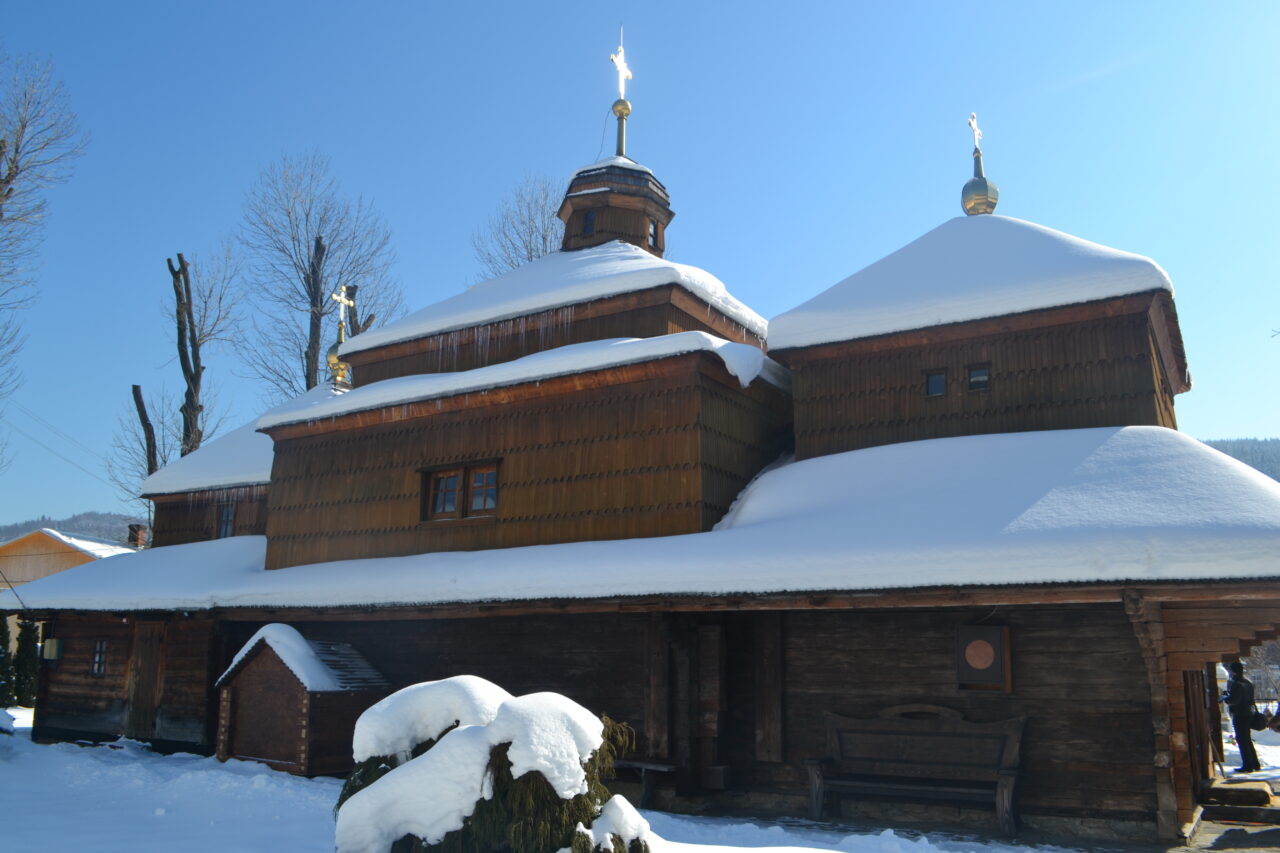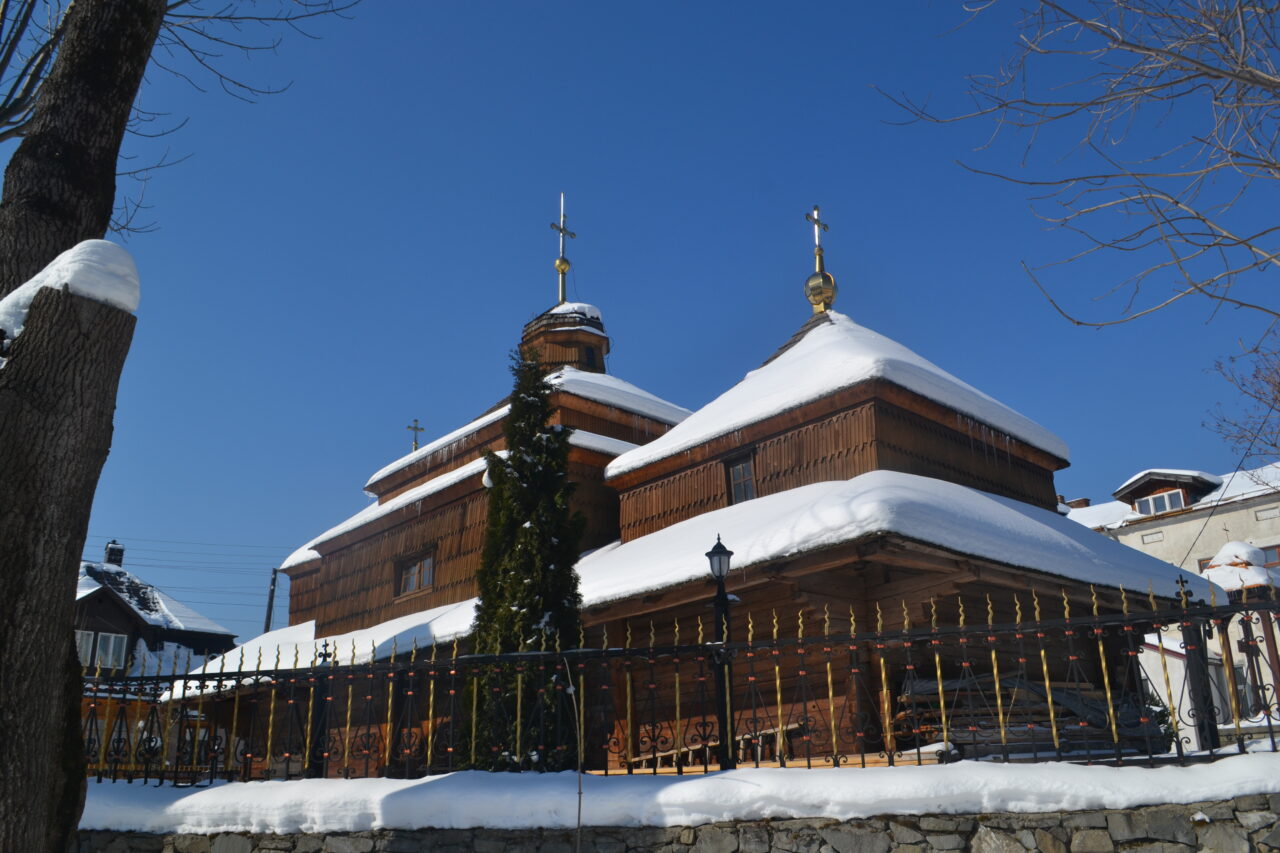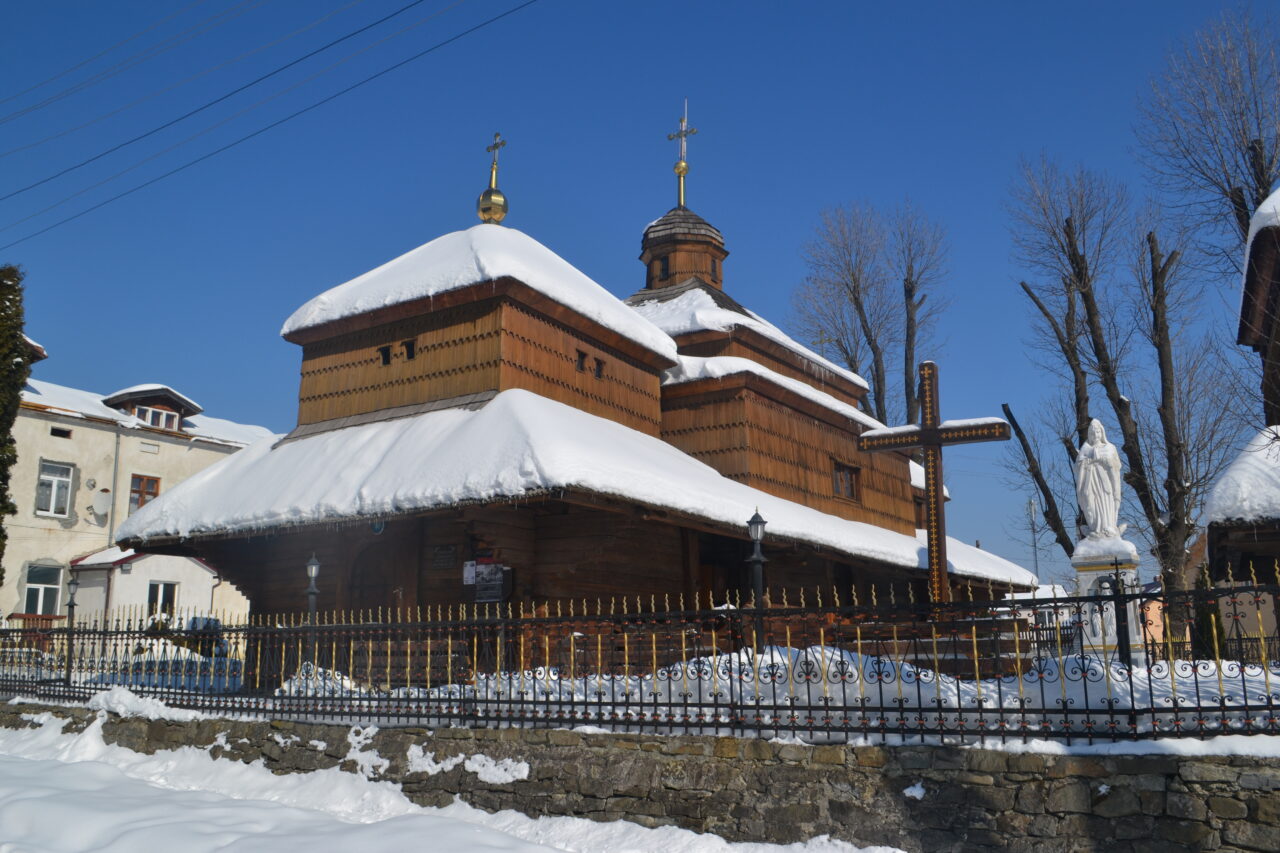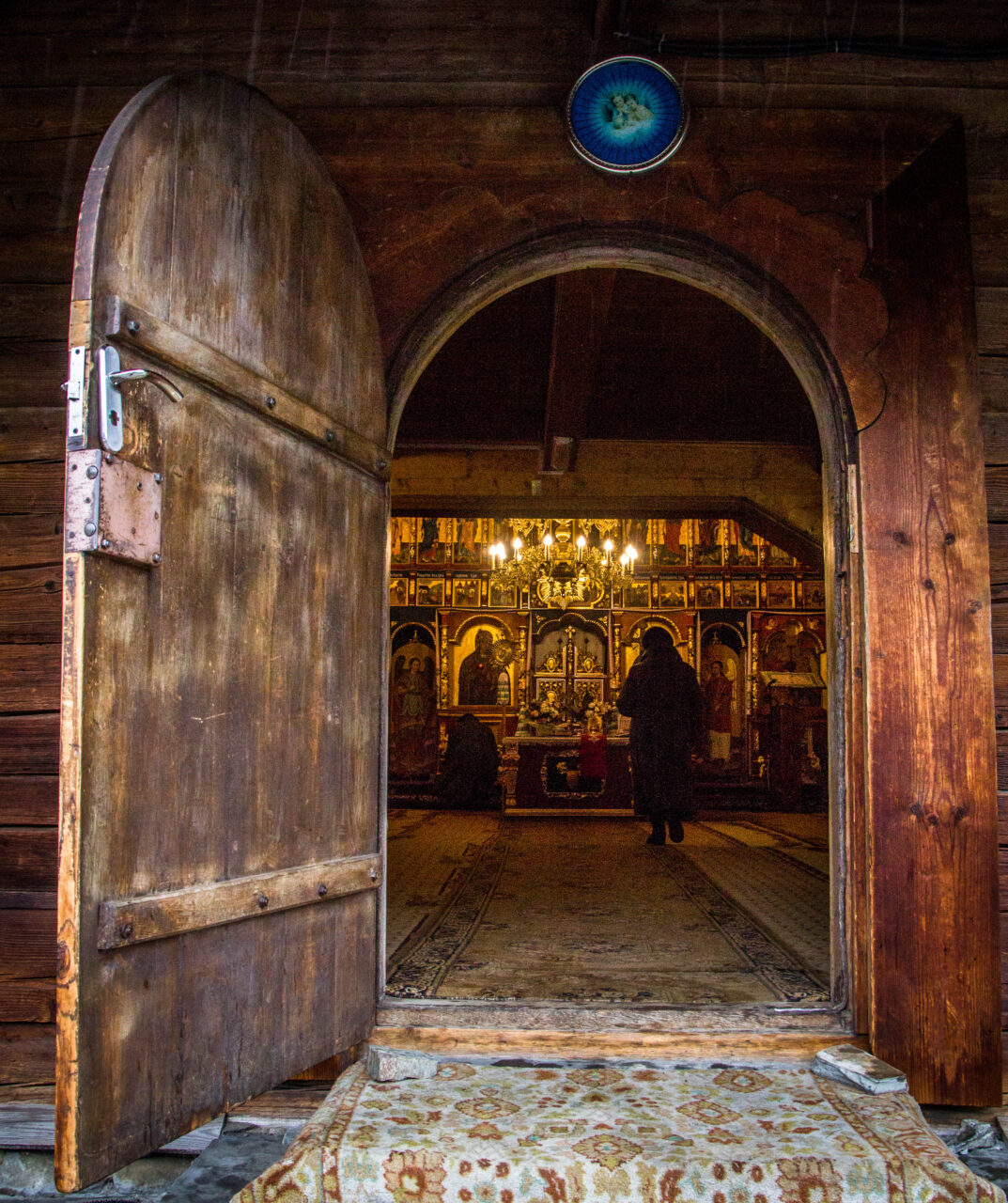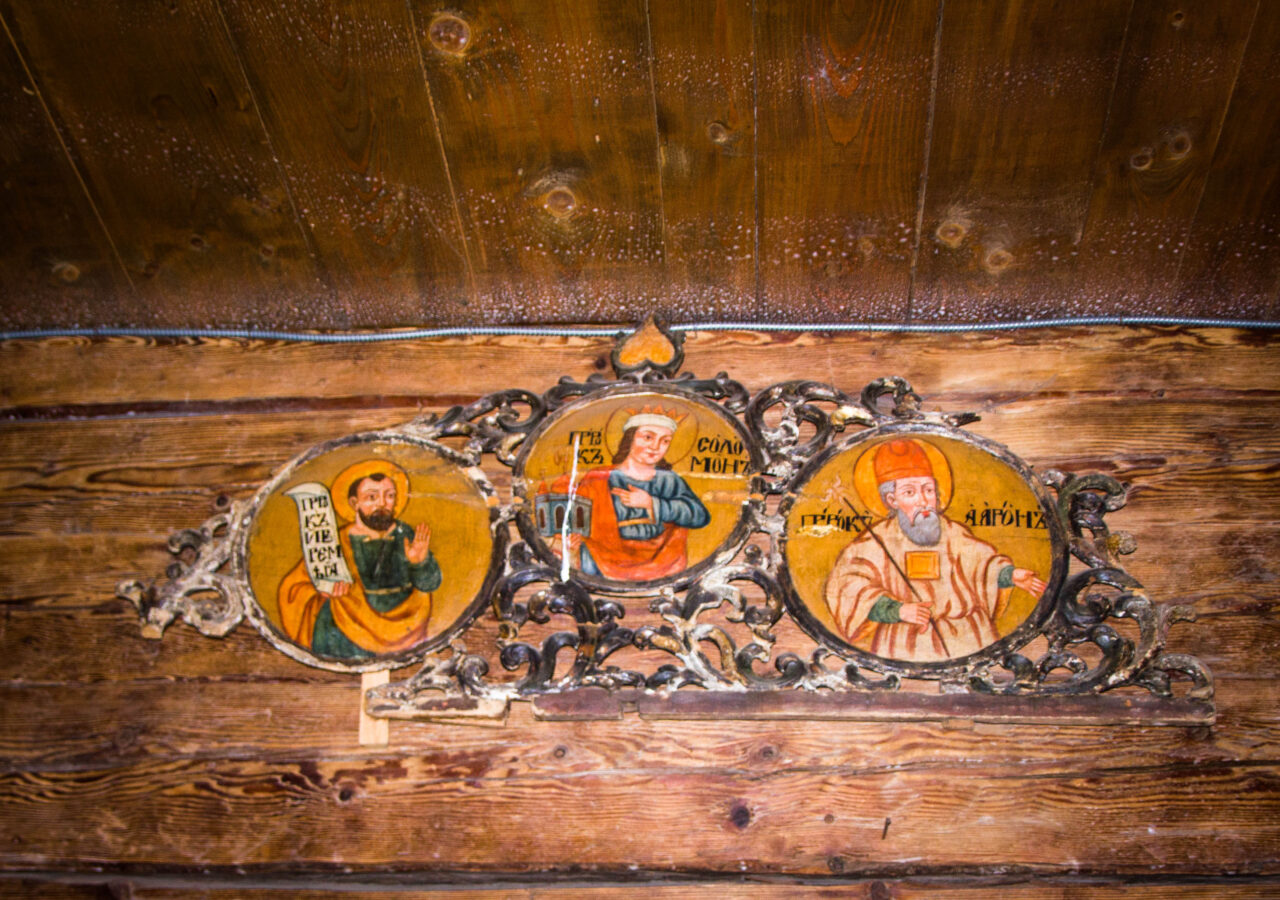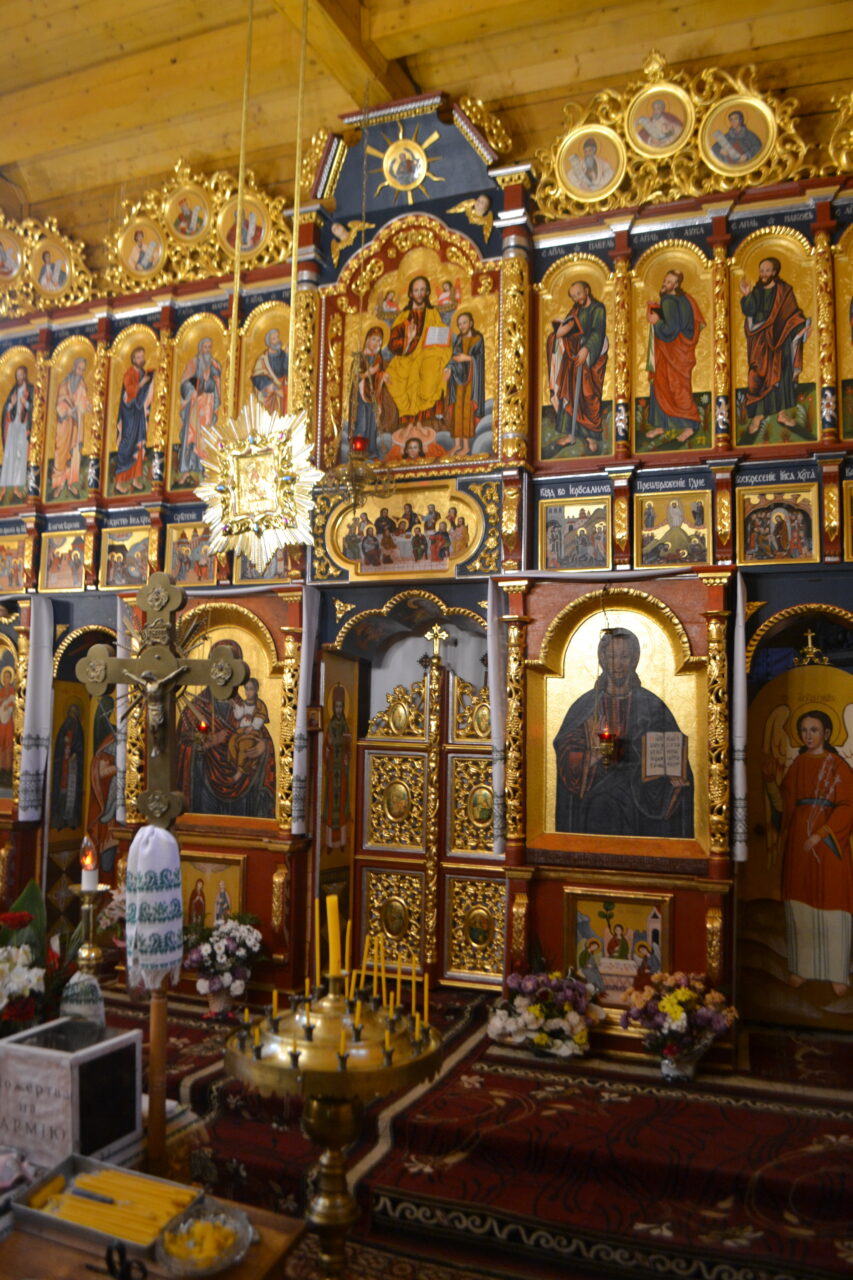Skole is a town with population of 6000 people, but it may seem boring only from windows of cars going on Kyiv-Chop motorway. There is an interesting neo-baroque palace of Hriodli barons, who used to own the Carpathian narrow-gauge railways at the turn of the 19th-20th centuries, and a modest neo-gothic Virgin Mary’s Sorrow church, and some nice houses in the style of Polish romanticism, and neoclassical district library (former ‘Sokil’ sport community building), and some more worthy examples of Soviet modernism. But the oldest monument in the city is the wooden Boiko church of St. Pantheleimon, which was revived from the ashes, like a phoenix. Let’s talk about it.
It is less than a kilometer from the railway station, the heart of the Carpathian town. The three-log three-story church is located only a block from Danylo Halytskyi central street and the cozy T. Shevchenko square, it is clutched in a corner between the streets named after two Ukrainian classics: Ivan Franko and Taras Shevchenko.
Three-log cabins, a four-sided pyramidal top above the nave and a shingled attic frill around the perimeter are the typical features of a Boiko church. Such temples seem to mimic their environment, which is spruces and mountain tops. Boiko temples look the most organic and natural in their native region. It is just perfectly.
The Skole shrine dates back to the almost fantastic for the Carpathians year, 1597. This makes the temple one of the oldest in the region, and it seems to be the absolute age champion among Boiko churches. But historians haven’t found the documentary proof of this fact yet. They just rely on the dwellers talks. But you can’t trust them completely, as it’s quite hard to tell the truth from the fiction. There is another legend, according to which Opryshky, the people who came down from the mountains, once buried their treasures near the Pantheleimon church.
It is known that the church used to be dedicated to St. Paraskeva.
In 1896 a non-Byzantine considerable brick church of the Nativity of the Mother of God was built near the newly built Roman Catholic church. It also belonged to the Greek-Catholic community as well as the old parish temple. Since then the town started using it much less. Worship services took place there only at major religious feasts. This lasted for more than 40 years, until in September 1939 Skole turned into a Soviet town from a Polish one.
The temple was closed, of course. Some icons from the iconostasis were destroyed, valuable things were stolen. The building didn’t stay idle for long; the shrine opened its doors for the believers from Skole in the first years after the Second World War. The church of Nativity of the Mother of God, which was badly damaged during bombardments, was being reconstructed at that time. While it was under reparations, people prayed in St. Panteleimon’s church.
And even later in the old church a museum of regional ethnography and history was opened here. It operated until 1990. The church was then returned to one of the Greek-Catholic town communities. On August 9, 1993, after almost 50 years, liturgy was served here again. Even before the temple reconsecration, this took place the same year on September 21.
And they undertook a thorough repair in the mid-1990s. The ceiling was replaced (in 1997) and new bells were purchased.
On April 14, 2009 the church burst into flame. 45 square meters of the interior walls and the roof burned down. Unfortunately, fires are often a requiem for wooden temples. And even after small ones, people start building giant modern stone shrines on the site of the ancient ones. But that’s not what happened in Skole. The Pantheleimon’s church had a lot much respectable status as an architectural monument of national importance. Thus the following year the temple was reconstructed.
Next to the church there is a large carves cross under a shingled roof to the north of the church and a slightly awkward wooden two-tiered bell tower. It is in the southern part of the churchyard. Master Sen Shkolovets built this square building in 1760, as there is an inscription on the door post claiming this. The bell tower first tier used to serve as a gate through which parishioners hurried to church services. Now there are icons that survived the fire. At present the complex has a separate entrance outside the bell tower.
Since 1994 there is St. Volodymyr’s fraternity in the church.

